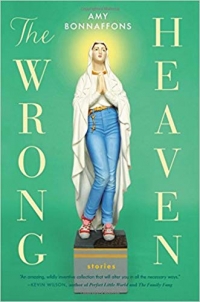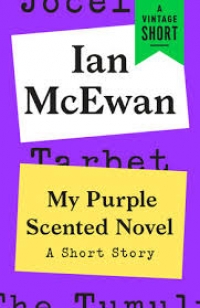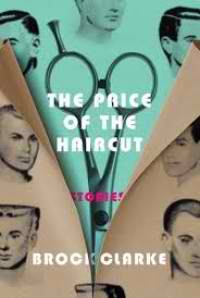The Wrong Heaven by Amy Bonnaffons
 Wednesday, October 24, 2018 at 8:17AM
Wednesday, October 24, 2018 at 8:17AM 
Published by Little, Brown and Co. on July 17, 2018
The Wrong Heaven is a remarkable collection of stories. In their offbeat nature and humorous takes on serious issues, the stories compare favorably to those of George Saunders and Jonathan Lethem. Amy Bonnaffons demonstrates her versatility by including a couple of stories that have a more serious tone.
In “The Wrong Heaven,” a teacher, wondering whether Jesus is on her side (the evidence suggests not) buys lawn ornaments of Jesus and Mary, plugs them in, and has a conversation. She unplugs them because she finds them to be too judgmental, but lights them up intermittently as the story proceeds. The best part of the story involves a dog who loves listening to Billie Holliday before taking a nap. The story’s moral is that, like charred marshmallows, there’s always another layer underneath, but I still like the story for the brief appearance of the canine jazz fan.
The woman in “The Other One” visits a karaoke place to sing “Hand in My Pocket” over and over, hoping to get it out of her head. The song has been plaguing her ever since she began to doubt the self-serving choices she had made about how to live her life. She hopes to purge the song, or at least to understand how her own conflicted feelings are reflected in the song’s lyrics, by making the song her own. The story is quite funny but it makes a serious point about how the mind deals with stress in ways that we don’t always understand, or tries to tell us things that we need to know.
“Horse” is the story of a woman who takes injections that turn her into a horse, but the larger theme is the longing that some women feel to live an entirely different kind of life, perhaps the kind of wild and powerful life that an unbroken horse represents. To make sure readers understand the point, the woman describes her transformation as “a cautionary tale” of “what happens when you ignore your own wildness for too long.” The woman’s transformation is juxtaposed against her roommate’s transition to motherhood. What they have in common is hope that their changed lives will be better and fear that there’s no turning back if their new lives are not what they expect.
In “Black Stones,” a dying woman explains to the angel of death the problems she has had being “the other woman.” Like all men, the angel of death has conflicting desires and isn’t good at understanding women.
The wannabe grad student who provides day care for two kids known as “The Two Cleas” sees the postmodernist irony that the people she encounters bring to their performances of life. But how will her postmodernist observations affect her own post-feminist performance of life? Will she decide that living is better than performing, or is performance and being amused by the performance of others ingrained in modern intellectual life?
The narrator of “A Room to Live In” carves two small children from balsa wood and they come to life, making her a God to the kids but not a great wife to her husband. I think the story is an allegory for parenthood. Whatever it is meant to be, the story is funny and sweet.
The characters in “Alternate” try to apply Obama’s promise of hope for the future to their own lives, only to discover that they cannot escape from the present. The narrator’s only plan is to decorate a blank wall in a way that will persuade her lover to come back. The story blends the difficulty of political and personal change in a way that is both funny and insightful.
“Goddess Night” pokes fun at women who take themselves and their worldviews much too seriously. It’s one of a couple of stories that explore sexual alternatives from the amusing perspective of a woman who considers herself clueless about what those alternatives might be. I like the advice the protagonist receives: “Just follow your desires, and you’ll live into the answers.” And I like the protagonist’s realization that women are both goddesses and mortals, “always already dying, always yet to be fully born.”
Only a couple of stories are not primarily the stuff of comedy. “Doris and Katie” is a touching story about friendship, relationships, aging, reactions to traumatic news, and the inevitability of everything coming to an end.
The most poignant story (and my favorite in the collection), “Little Sister,” is narrated by a young girl who isn’t so young by the story’s end. She copes with a dysfunctional broken family by creating a not-quite-imaginary little sister who lives under her bed, unless she’s been buried in the ground or beneath the floorboards. The story is about the ways people find to protect themselves from harm, or at least to protect an untouched image of themselves that will survive the harsh reality of life.
There isn’t a bad story in the collection, and I suspect that most readers will find one or two to be memorable. I’ve never encountered Amy Bonnaffons’ work before, but I hope to encounter her again and again.
RECOMMENDED



